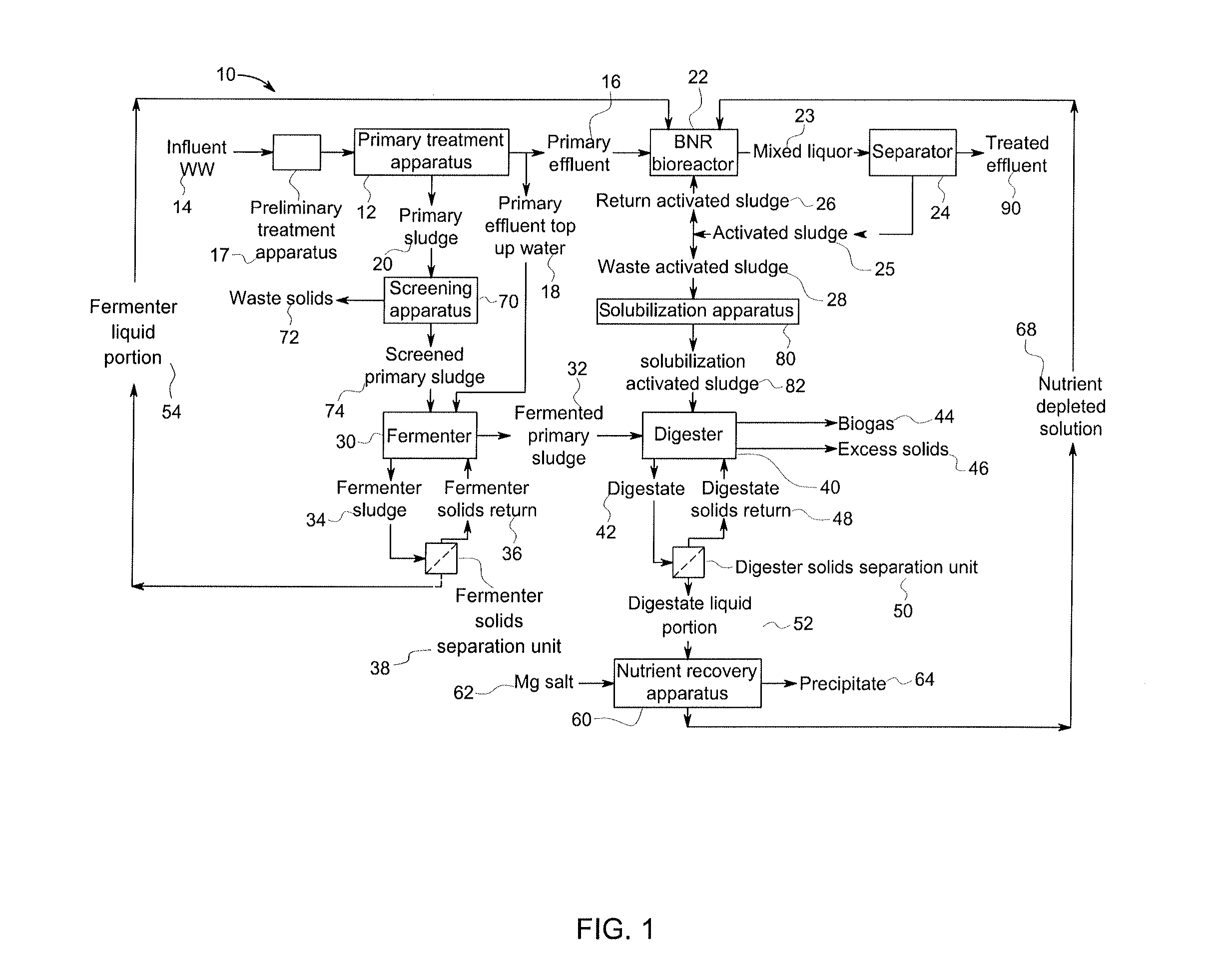Method and system for treating wastewater
a wastewater treatment and wastewater technology, applied in the direction of multi-stage water/sewage treatment, filtration separation, separation process, etc., can solve the problems of increasing the loading of the bnr system, vfas concentration is too high,
- Summary
- Abstract
- Description
- Claims
- Application Information
AI Technical Summary
Benefits of technology
Problems solved by technology
Method used
Image
Examples
Embodiment Construction
[0013]In a wastewater treatment process, 50% or more of the suspended solids (SS) in influent wastewater are removed through primary treatment. The primary sludge is treated first in a fermenter and then in an anaerobic digester. Remaining fine solids in the primary effluent are treated in a BNR bioreactor.
[0014]25% or more of the COD in the influent wastewater is also removed from the wastewater with the primary sludge. Soluble and colloidal COD remaining in the primary effluent is oxidized in the BNR bioreactor, or converted into cell mass which leaves the BNR as WAS. The WAS is sent to the anaerobic digester.
[0015]Phosphorous is taken up in the BNR bioreactor, transferred to the digester with the WAS, and extracted in soluble form from the anaerobic digester as permeate from a solid-liquid separation unit associated with the anaerobic digester. The phosphorous is chemically removed from the permeate, for example by adding a metal salt to produce struvite.
[0016]Nitrogen is removed...
PUM
| Property | Measurement | Unit |
|---|---|---|
| Time | aaaaa | aaaaa |
| Time | aaaaa | aaaaa |
| Time | aaaaa | aaaaa |
Abstract
Description
Claims
Application Information
 Login to View More
Login to View More - R&D
- Intellectual Property
- Life Sciences
- Materials
- Tech Scout
- Unparalleled Data Quality
- Higher Quality Content
- 60% Fewer Hallucinations
Browse by: Latest US Patents, China's latest patents, Technical Efficacy Thesaurus, Application Domain, Technology Topic, Popular Technical Reports.
© 2025 PatSnap. All rights reserved.Legal|Privacy policy|Modern Slavery Act Transparency Statement|Sitemap|About US| Contact US: help@patsnap.com


